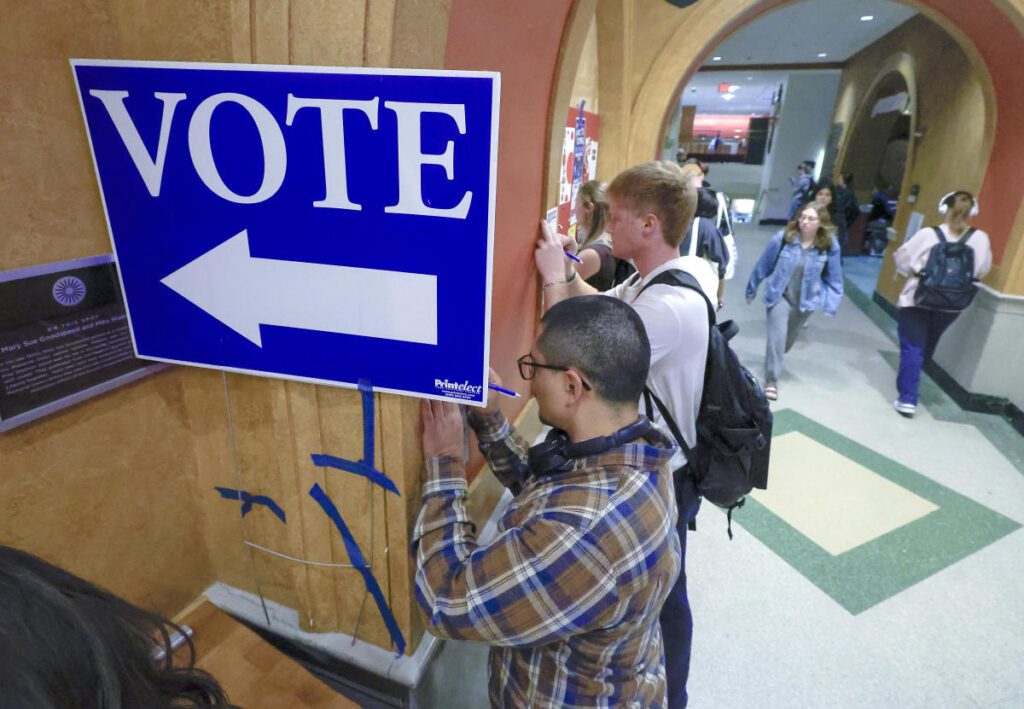In the lead-up to the upcoming elections, early voting has become a focal point for Republicans, encouraged significantly by former President Donald Trump. As Republicans participate in early voting, the numbers are showing a positive surge, with almost 19 million individuals casting their ballots ahead of Election Day. This is particularly notable in swing states like Georgia and North Carolina, where early voting figures are breaking records. Historically, campaigns aim to have their supporters vote before Election Day to maximize resources towards mobilizing those who may be on the fence. This strategy had faltered in the past due to Trump’s skepticism about early voting processes, wherein he propagated unfounded claims regarding the legitimacy of ballots cast ahead of the elections. However, he is now urging Republicans to return to early in-person voting, marking a strategic shift for the party.
Early voting this election cycle shows Republicans outperforming Democrats in some regions, with notable cases such as Nevada, where 6,000 more Republicans than Democrats had cast early ballots recently. Despite these promising figures, the interpretation of how this translates to the overall election results remains uncertain. The statistics reveal only the party affiliation of early voters without indicating their candidate preferences, rendering it challenging to draw concrete conclusions. Additionally, the electoral landscape is still evolving, given that only about 11% of the expected votes from the 2020 presidential election have been cast thus far. Historical early voting patterns have demonstrated that parties can build a lead in early voting, only to lose it on Election Day if their supporters have already voted, limiting their turnout capacity.
Political scientists are cautious about overinterpreting the current turnout trends. Experts like Michael McDonald from the University of Florida observe that Democrats typically have a more substantial lead in early voting, but this year, Republicans may be closing the gap. However, McDonald warns against prematurely labeling this shift as an outright advantage for Republicans; it could merely represent a redistribution of early voting advantages without fundamentally altering support levels for either party. Reports from various states indicate unprecedented early turnouts despite adverse conditions, such as the aftermath of Hurricane Helene in North Carolina and Georgia. This enthusiasm is a hopeful sign for both parties as they mobilize their bases ahead of Election Day.
Republicans are still navigating a complex relationship with mail-in voting, an area where they remain at a disadvantage compared to Democrats. In Pennsylvania, for instance, Democrats have submitted approximately 350,000 more mail ballots than Republicans, which could affect the overall outcome in this pivotal state. However, Republicans are countering this trend through robust early in-person voting strategies in various competitive states. The aversion to mail-in ballots among Republican voters, shaped by years of conspiracy theories regarding their legitimacy, presents a hurdle for broader participation, even as some leaders within the party advocate for early in-person voting.
Despite their recent encouragement toward early voting, lingering doubts persist among some Republican voters, reflecting the impact of a campaign centered around skepticism of the voting process. Instances such as the recent event with Elon Musk, where the audience questioned the value of early voting, exemplify the ongoing need for some GOP leaders to reassure their base. Yet, analysts agree that having early voting parity is preferable to the lopsided advantages Democrats have seen in prior elections. Pollsters track these trends closely, and some Republican analysts believe the current statewide dynamics, which show an uptick in early Republican voting, could represent progress.
The overall takeaway from this early voting surge suggests a heightened enthusiasm among voters across the political spectrum. Analysts from both parties concur that both sides are mobilizing aggressively, minimizing the possibility of complacency among their respective supporters. The heightened turnout indicates that neither party can expect a lack of engagement from their opponents, complicating previous assumptions regarding the momentum each side may carry into Election Day. As campaigns continue to unfold and more ballots are cast, Democrats remain vigilant and encouraged by their current early voting numbers, seeing potential positives as they prepare for an intensely competitive election season.

